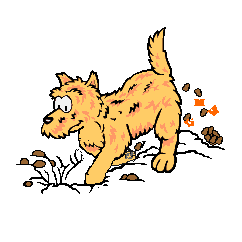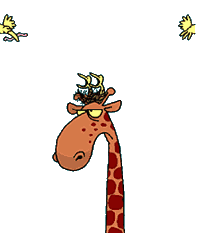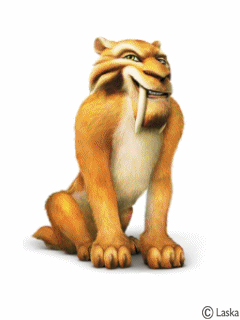Animations Pictures Biography
In 2010, the then 27 year old Canadian, Luka Magnotta, first appeared on the animal rights radar when he started posting horrific videos of animal abuse on the internet. The videos began with the torture and suffocation of kittens then progressed to a kitten being fed to a snake. The well known models and animal rights activists, the Barbi Twins, were the first to take notice and asked Last Chance for Animals (LCA) for their professional opinion of the videos legitimacy. LCA was one of the few organizations that did not dismiss the videos as fake. LCA reached out to law enforcement in the US, Canada, and to Interpol about the videos but didn’t receive a response.The cruelty and abuse of the animals in these videos was a warning sign of the progression to come from crimes against animals to crimes against humans. When interviewed about one of the videos showing the torture of kittens, Magnotta told a reporter, "Well, I have to say goodbye for now, but don't worry, in the near future you will be hearing from me again. This time, however, the victims won't be small animals.”
On May 25th, 2012, Magnotta posted a gruesome video on the internet of the murder and dismemberment of his alleged ex-lover, a Chinese exchange student named Lin Jun. The video, showing a tied-up Jun repeatedly being stabbed with an ice pick and kitchen knife before being dismembered, was later dubbed as “1 Lunatic 1 Ice Pick.” Initially dismissed as a fake by officials, the police later confirmed the video as being authentic.
Magnotta fled Canada when an international manhunt for him began after severed human limbs were received by the offices of Canadian political parties.
LCA offered a $7,500 reward to any information leading to the arrest and conviction of Magnotta. In addition, in an effort to track down the murderer and animal abuser, LCA’s Special Investigations Unit (SIU) took unprecedented steps to try and flush him out. Taking clues from the thousands of pages of pseudonyms and online posts by Magnotta over the years, LCA's SIU accurately predicted Magnotta would be checking websites and videos of himself from mobile devices and internet cafes while on the run. The SIU attempted to lure the killer, or his companions, out using covert tactics often reserved for law enforcement and intelligence agencies.
SIU investigators posted a video about Magnotta, dubbing him "The James Dean Killer." A second video titled "1 Man 1 Icon" was posted to continue the façade using family photos of Magnotta not yet featured in the press. The sites quickly received numerous hits and word was spreading. Both sites received hits from France and Germany when Magnotta was in those countries.
During the course of this investigation, SIU investigators made contact with several individuals who may have been Luka, or close associates of Luka. The information gathered was turned over to law enforcement. When Magnotta was apprehended and arrested, reports stated he was watching YouTube and viewing images and videos of himself.
This case clearly demonstrates a link between cruelty to animals and violence toward humans. LCA is pushing for tougher sentences to be handed out to animal abusers and an “animal abusers” offenders list. Animal abusers convicted of crimes against animals should be put on a watch list, just as sex offenders are, so they can be monitored for continuing and escalating behavior, and can be stopped before committing more heinous crimes.
LCA’s Chris DeRose appeared on CNN’s Jane Velez-Mitchell to talk about animal abuse being the first step to violent and fatal crimes towards humans.
This may be calcified to form structures like shells, bones, and spicules.[13] During development, it forms a relatively flexible framework[14] upon which cells can move about and be reorganized, making complex structures possible. In contrast, other multicellular organisms, like plants and fungi, have cells held in place by cell walls, and so develop by progressive growth.[10] Also, unique to animal cells are the following intercellular junctions: tight junctions, gap junctions, and desmosomes.
Nearly all animals undergo some form of sexual reproduction.[16] They have a few specialized reproductive cells, which undergo meiosis to produce smaller, motile spermatozoa or larger, non-motile ova.[17] These fuse to form zygotes, which develop into new individuals.[18]
Many animals are also capable of asexual reproduction.[19] This may take place through parthenogenesis, where fertile eggs are produced without mating, budding, or fragmentation.[20]
A zygote initially develops into a hollow sphere, called a blastula,[21] which undergoes rearrangement and differentiation. In sponges, blastula larvae swim to a new location and develop into a new sponge.[22] In most other groups, the blastula undergoes more complicated rearrangement.[23] It first invaginates to form a gastrula with a digestive chamber, and two separate germ layers — an external ectoderm and an internal endoderm.[24] In most cases, a mesoderm also develops between them.[25] These germ layers then differentiate to form tissues and organs
All animals are heterotrophs, meaning that they feed directly or indirectly on other living things.[27] They are often further subdivided into groups such as carnivores, herbivores, omnivores, and parasites.[28]
Predation is a biological interaction where a predator (a heterotroph that is hunting) feeds on its prey (the organism that is attacked).[29] Predators may or may not kill their prey prior to feeding on them, but the act of predation always results in the death of the prey.[30] The other main category of consumption is detritivory, the consumption of dead organic matter.[31] It can at times be difficult to separate the two feeding behaviours, for example, where parasitic species prey on a host organism and then lay their eggs on it for their offspring to feed on its decaying corpse. Selective pressures imposed on one another has led to an evolutionary arms race between prey and predator, resulting in various antipredator adaptations.[32]
Most animals indirectly use the energy of sunlight by eating plants or plant-eating animals. Most plants use light to convert inorganic molecules in their environment into carbohydrates, fats, proteins and other biomolecules, characteristically containing reduced carbon in the form of carbon-hydrogen bonds. Starting with carbon dioxide (CO2) and water (H2O), photosynthesis converts the energy of sunlight into chemical energy in the form of simple sugars (e.g., glucose), with the release of molecular oxygen. These sugars are then used as the building blocks for plant growth, including the production of other biomolecules.[10] When an animal eats plants (or eats other animals which have eaten plants), the reduced carbon compounds in the food become a source of energy and building materials for the animal.[33] They are either used directly to help the animal grow, or broken down, releasing stored solar energy, and giving the animal the energy required for motion.[34][35]
Animals living close to hydrothermal vents and cold seeps on the ocean floor are not dependent on the energy of sunlight.[36] Instead chemosynthetic archaea and bacteria form the base of the food chain.
Animals are a major group of multicellular, eukaryotic organisms of the kingdom Animalia or Metazoa. Their body plan eventually becomes fixed as they develop, although some undergo a process of metamorphosis later on in their life. Most animals are motile, meaning they can move spontaneously and independently. All animals are also heterotrophs, meaning they must ingest other organisms or their products for sustenance.
Most known animal phyla appeared in the fossil record as marine species during the Cambrian explosion, about 542 million years ago.
The word "animal" comes from the Latin word animalis, meaning "having breath".[1] In everyday colloquial usage, the word often refers to non-human members of kingdom Animalia. Sometimes, only closer relatives of humans such as mammals and other vertebrates are meant in colloquial use.[2] The biological definition of the word refers to all members of the kingdom Animalia, encompassing creatures as diverse as sponges, jellyfish, insects and humans.[3]Animals have several characteristics that set them apart from other living things. Animals are eukaryotic and mostly multicellular,[4] which separates them from bacteria and most protists. They are heterotrophic,[5] generally digesting food in an internal chamber, which separates them from plants and algae.[6] They are also distinguished from plants, algae, and fungi by lacking rigid cell walls.[7] All animals are motile,[8] if only at certain life stages. In most animals, embryos pass through a blastula stage,[9] which is a characteristic exclusive to animals.
With a few exceptions, most notably the sponges (Phylum Porifera) and Placozoa, animals have bodies differentiated into separate tissues. These include muscles, which are able to contract and control locomotion, and nerve tissues, which send and process signals. Typically, there is also an internal digestive chamber, with one or two openings.[10] Animals with this sort of organization are called metazoans, or eumetazoans when the former is used for animals in general.
With a few exceptions, most notably the sponges (Phylum Porifera) and Placozoa, animals have bodies differentiated into separate tissues. These include muscles, which are able to contract and control locomotion, and nerve tissues, which send and process signals. Typically, there is also an internal digestive chamber, with one or two openings.[10] Animals with this sort of organization are called metazoans, or eumetazoans when the former is used for animals in general.[11]
All animals have eukaryotic cells, surrounded by a characteristic extracellular matrix composed of collagen and elastic glycoproteins.[12] This may be calcified to form structures like shells, bones, and spicules.[13] During development, it forms a relatively flexible framework[14] upon which cells can move about and be reorganized, making complex structures possible. In contrast, other multicellular organisms, like plants and fungi, have cells held in place by cell walls, and so develop by progressive growth.[10] Also, unique to animal cells are the following intercellular junctions: tight junctions, gap junctions, and desmosomes.
Nearly all animals undergo some form of sexual reproduction.[16] They have a few specialized reproductive cells, which undergo meiosis to produce smaller, motile spermatozoa or larger, non-motile ova.










No comments:
Post a Comment